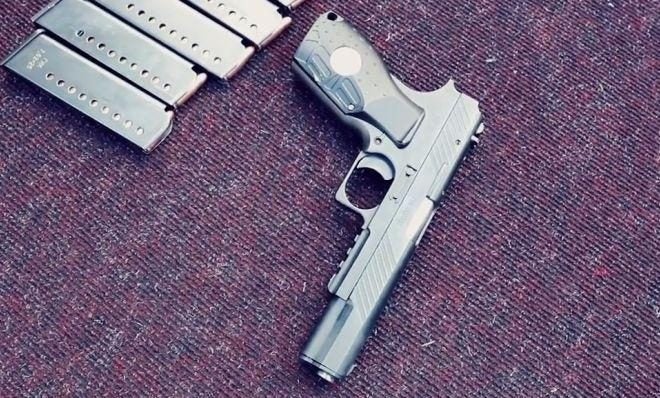Firearm designers in Donetsk have developed a new handgun called Oplot. It is a hammer fired, short barrel recoiling, tilting barrel locking semi-auto pistol. It is pretty reminiscent of Tokarev pistol and looks like its modernized version.
Call it Donetsk People’s Republic with or without “so-called” or “self-proclaimed”, call them freedom fighters or pro-Russian separatist … it is up to you. I’d suggest to set the politics aside and just enjoy the news about a new firearm.
Description
The name of the pistol itself (OPLOT (ОПЛОТ)) means bulwark, stronghold. However, it is named after the “Oplot Brigade”, which is founded by today’s leader of Donetsk People’s Republic – Alexander Zakharchenko, who actually told about this new pistol to a YouTube channel/project called War Gonzo.
Dimension-wise, Oplot is about identical to the Stechkin automatic pistol (APS). APS has an overall length of 8.8″ and height of 5.9″. In the image below you can see the APS laid over the Oplot.
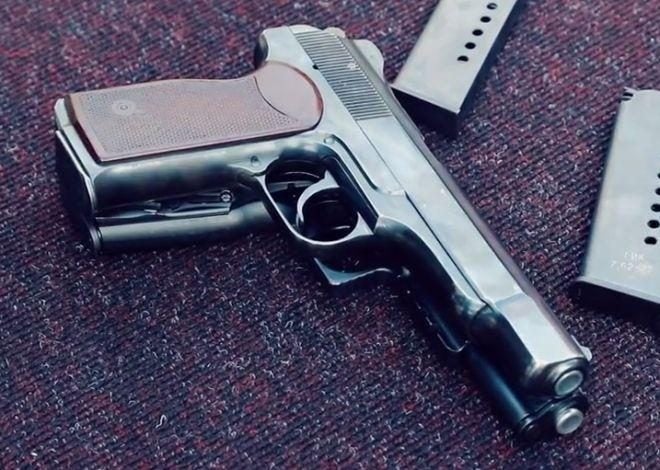
The overall look and some parts on this pistol give away that it is based or at least inspired by the TT pistol. Particularly, the slide release lever and its retaining clip on the opposite side of the gun as well as the trigger are probably directly borrowed from the Tokarev pistol.
The pistol also features a Picatinny rail section on the frame, a squared trigger guard, front and rear slide serrations and a bit unusual grip shape. The slide mounted safety selector is on different sides of the slide on different images. So, it is probably reversible.
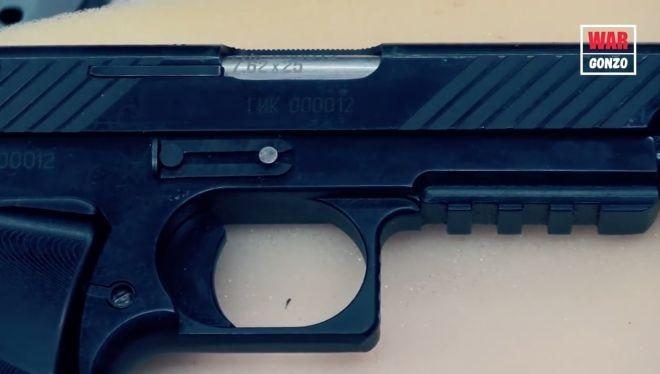
The pistol is intended to have an ability to change the calibers. It comes with two barrels and two different magazines to allow to convert it from being chambered in 7.62x25mm Tokarev to 9x19mm and vice versa. The two cartridges have identical rim diameters and rim cut geometry which makes it possible to change the calibers by simply swapping the barrels and using the proper magazines. I am pretty sure the 9x19mm can even be loaded into 7.62x25mm magazines in case of emergency.
According to Zakharchenko, the 7.62x25mm is primarily considered for the military use due to its higher penetrating capabilities. He also says that the 9x19mm is more suitable for police use. Another reason they have the option to change the caliber to 9x19mm is that it makes possible to use captured cartridges which are usually 9mm ones.
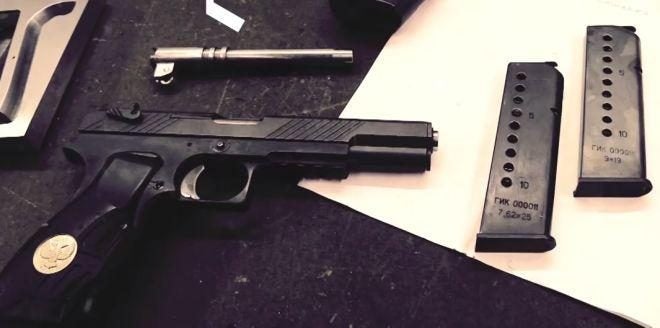
The magazines are single stack with 10 round capacity. Now, this is something that I can’t understand why. Why not to make it double stack? The gun is not based on Tokarev frames but has new ones made from ground up … so why not to design the frame to take double stack magazines? The thickness seems not to be a big concern too judging by the pretty thick grip. So that doesn’t justify the choice of single stack magazines either. Hopefully, they will later come with an explanation of their choice of a single stack design.
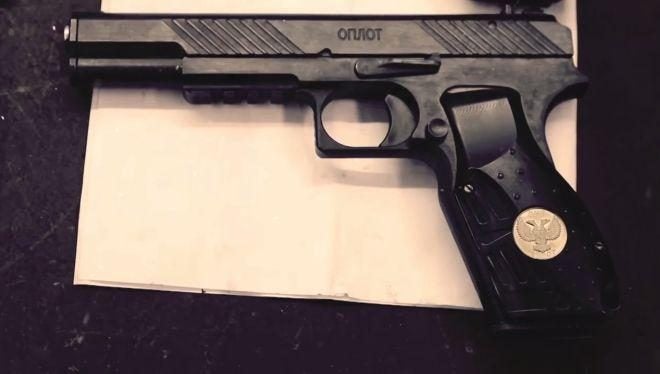
Manufacturing
According to Zakharchenko, the pistol is completely designed and manufactured domestically – in Donetsk. They use the manufacturing capabilities and facilities which are present in the region starting from the Soviet era. Although they do combine that with new machinery, which you’ll see in a video later in this article.
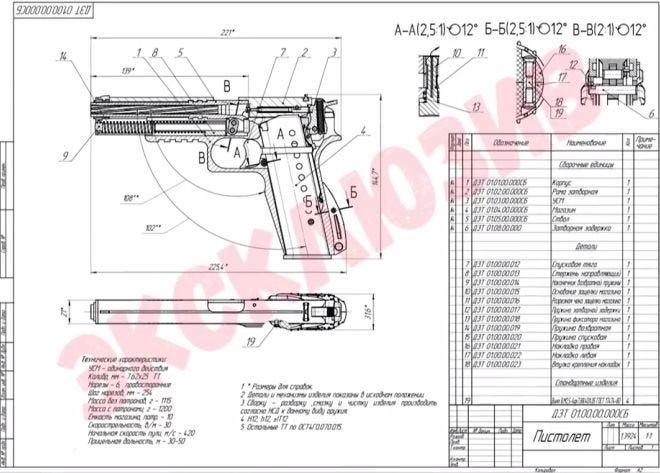
A drawing/blueprint of the Oplot pistol.
The frame and the slide are machined out of a solid block of metal. The slide is obviously a steel made one, but the material of the frame is unknown.
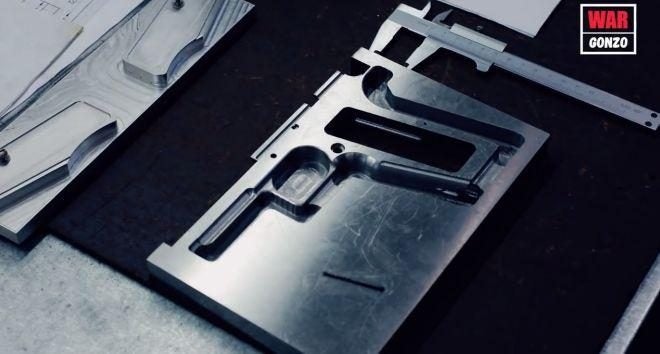
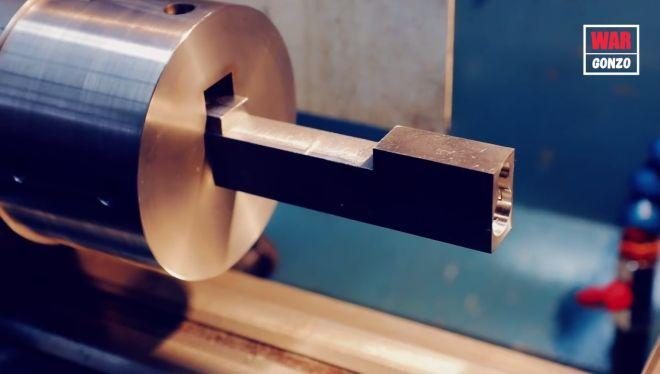
The barrel making process is a bit different. Instead of making long rifled barrel blanks and cutting them to the desired length, they cut the steel bars first, then drill the bore and rifle that short sections. Possibly, the lack of deep hole drilling machinery or reliable source of barrel blanks makes this method much more versatile for them.
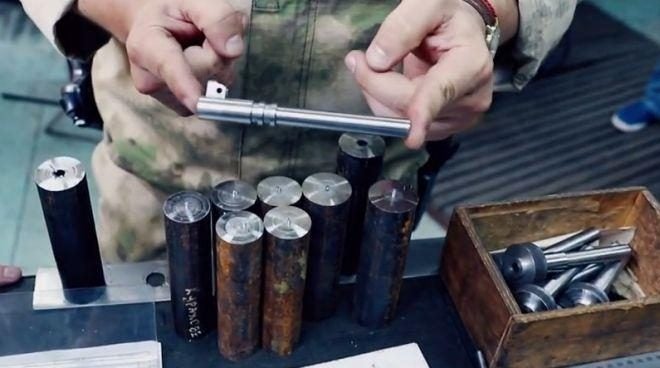
If you understand Russian you can watch the earlier mentioned video below. If not, there is still some interesting footage of the facility and manufacturing processes. So far, this video is the first and only reliable source telling about this pistol. In fact, the images in this article are screenshots from that video.
Testing
If you watched the video, you may have noticed that they are testing the pistol on three armor vests numbered 3, 4 and 5. The numbers indicate the protection levels. However, they don’t use US bulletproof vest classification system (NIJ Standard-0101.06) but its Russian equivalent (GOST R 50744-95).
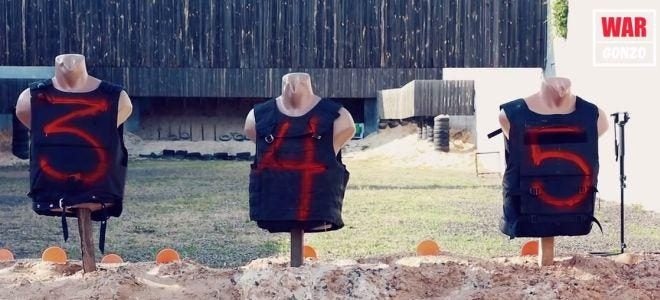
According to that Russian armor classification, a Class 3 vest must withstand a 9x19mm armor piercing bullet (7N21) fired from Yarigin pistol (a.k.a MP-443 Grach) which has a 4.4″ barrel. The shot is fired from a 5-meter distance. The mentioned bullet weighs about 80 grains and has a muzzle velocity of around 1500 fps. The Russian class 4 vest stops a 5.45x39mm and 7.62x39mm bullets and Class 5 must stop a 7.62x54R round with an armor piercing bullet (similar to US Class IV). That being said, I don’t get the point of testing the pistol on vests designed to stop AP rifle projectiles.
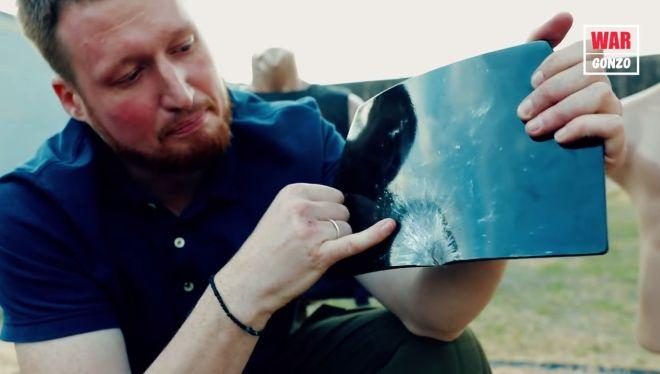
They are testing the pistol in 7.62x25mm configuration and looks like it penetrates the first vest. Obviously, that kind of tests won’t reveal anything new. Although the gun itself is new, the cartridge (7.62x25mm Tokarev) is a well-known one and its ballistics from a given length barrel is pretty much predictable.
Final Notes
On the reporter’s question of at what scale they are capable of making the Oplot pistol, Zakharchenko answered that they can arm the Indian army if needed. The reporter’s follow-up question was if it means they consider it for export? Zakharchenko answered that they are actually looking for export possibilities. I am pretty sure that by saying they can arm the Indian army he means they can make as much of the pistols as required.
At the end of the video, Zakharchenko also makes a very interesting statement by saying that they are developing another pistol which will be able to compete with Glocks. He admits that it is an ambitious project though.
As always, if more information becomes known about the further development of Oplot or about that new (yet another) Glock killer, we’ll keep our readers up to date.
 Your Privacy Choices
Your Privacy Choices
